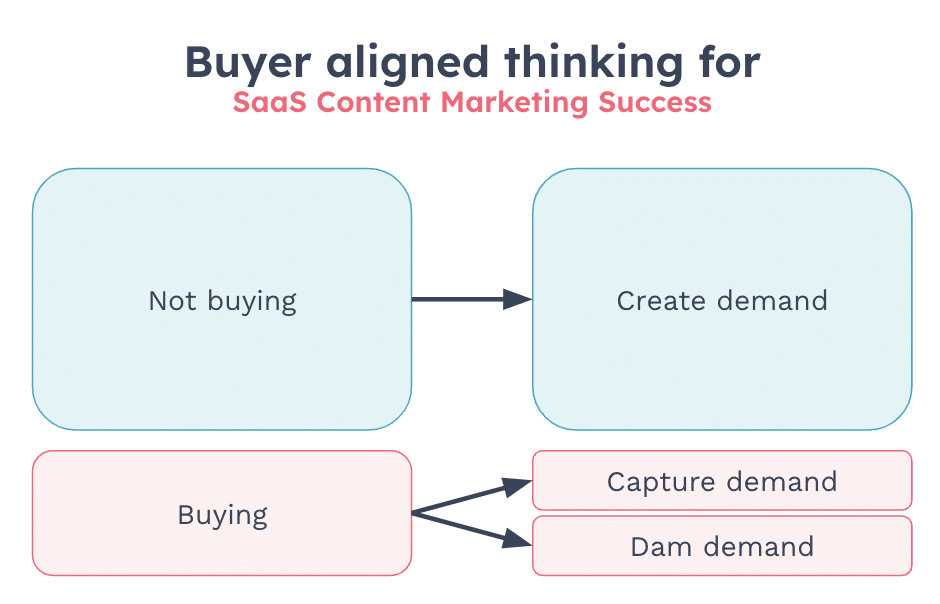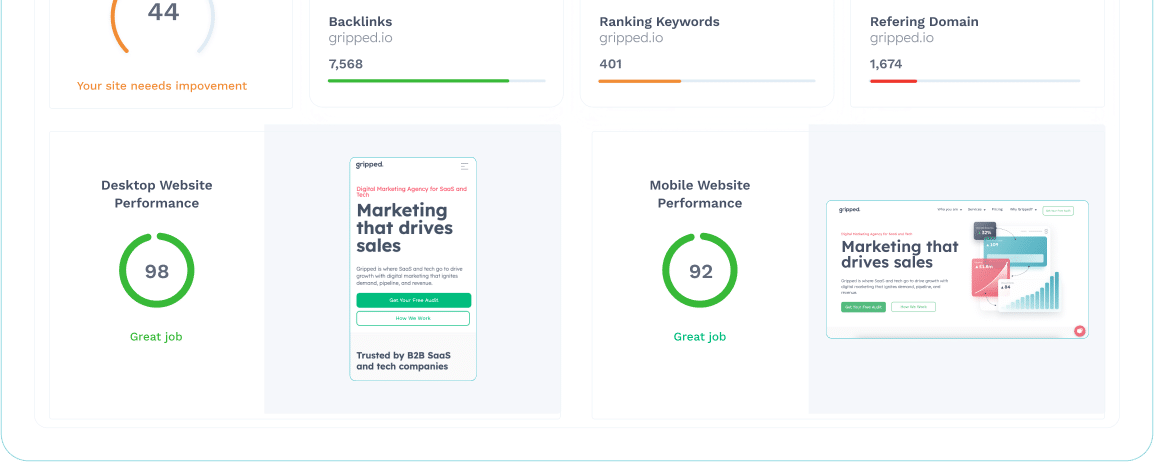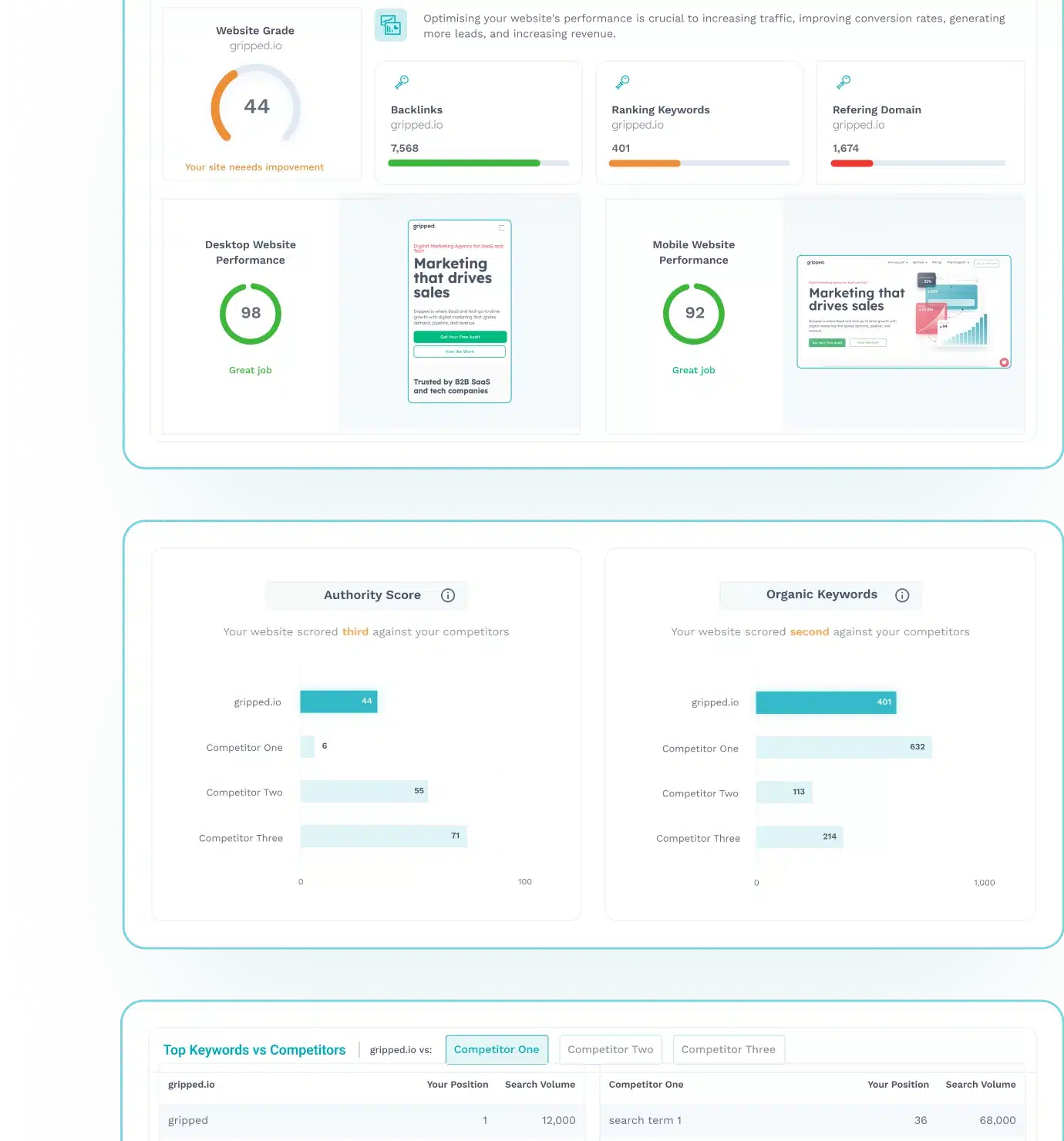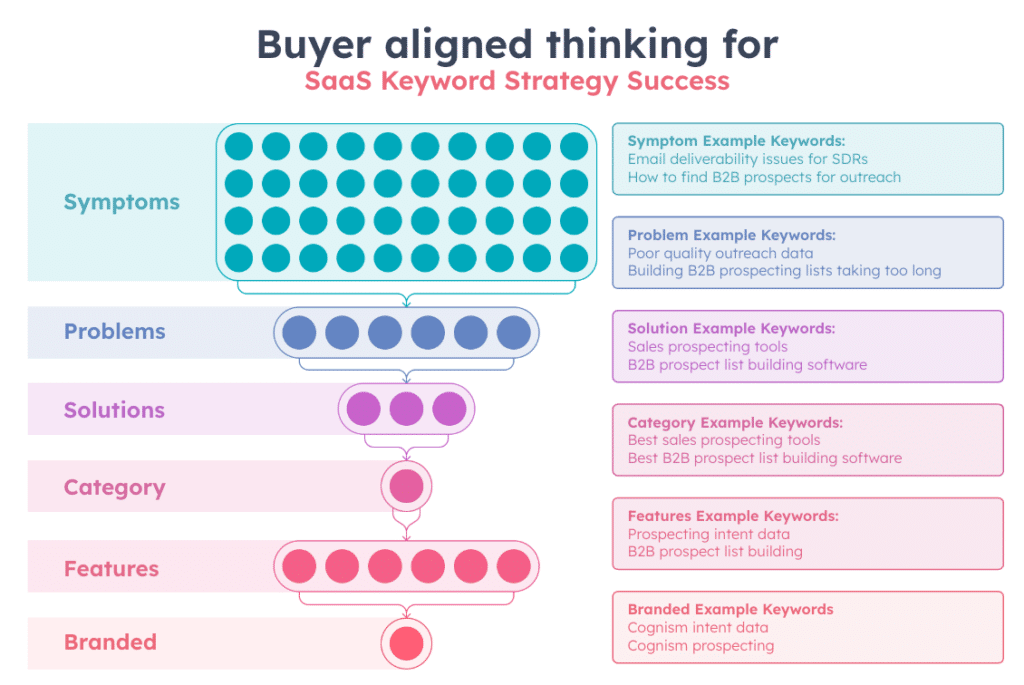I’m feeling generous this month (is that a pig flying?), and I’m giving you all the exact formula I’ve used to create 50+ B2B SaaS keyword strategies in my time at Gripped that actually build pipeline.
From my five years in SaaS marketing, I’ve seen keyword strategies consistently trip up businesses both big and small. The most frequent mistake I see is focusing on creating awareness through pain-point-focused content before the mechanisms are in place to actually guide someone into a sales conversation.
The way I get around this is by changing the way I think about the funnel — your buyers are either in-market or they’re not, so I’d approach a keyword strategy with this in mind, not as a top, middle and bottom of funnel strategy.

What that means in practice is aligning types of demand to whether your audience are buying or not. So, in this post I’ve explained what each type of demand is, the keyword themes you should target, and the content types that are most suitable (plus a SaaS keyword template you can use at the bottom).

See how your website stacks up against your competitors
Use our free online website grader to benchmark your search presence and SEO hygiene against your three closest competitors.

SaaS keyword strategy when your audience are in buying mode
Capture demand: Some of your audience are searching for solutions in your category right now, if you’re not showing up for these you’re missing the opportunity for more sales conversations.
- Keyword themes: High intent category, high intent pain points
- Content types: Product/service/solution pages mapped to categories, feature pages mapped to pain points, listicles mapped to categories
Dam demand: Your audience won’t always search for your category and will be looking at alternatives. Your goal is to make sure you show up when they’re not and position yourself as the better solution.
- Keyword themes: Competitor brand names, indirect categories
- Content types: Alternatives mapped to indirect categories, comparisons mapped to competitor brands
SaaS keyword strategy when your audience aren’t in buying mode
Create demand: You’re looking to be appearing for educational and problem-orientated searches. These won’t turn into leads – you’re simply aiming to stay in front of your audience and ensuring you’re keeping an eye on on-page metrics that will give you an indication of whether they’re finding it valuable.
- Keyword themes: Persona symptoms, persona pain points, jobs to be done (JTBD), industry trends
- Content types: Expert articles mapped to symptoms & pain points & industry trends, how-to’s mapped to pain points and JTBD, glossaries mapped to JTBD topics & metrics (e.g. [persona] guide to [topic/metric they care about])
The takeaway? Start with the fastest routes to revenue. Once you have the mechanisms to capture demand in place, you can then focus on creating demand for those not in-market.
A template to use when creating your SaaS keyword strategy
Here’s a template to start structuring your keywords around how your audience identifies their pain, searches for solutions, and becomes aware of your brand. I’ve used Cognism as the start of an example keyword strategy in this one.


